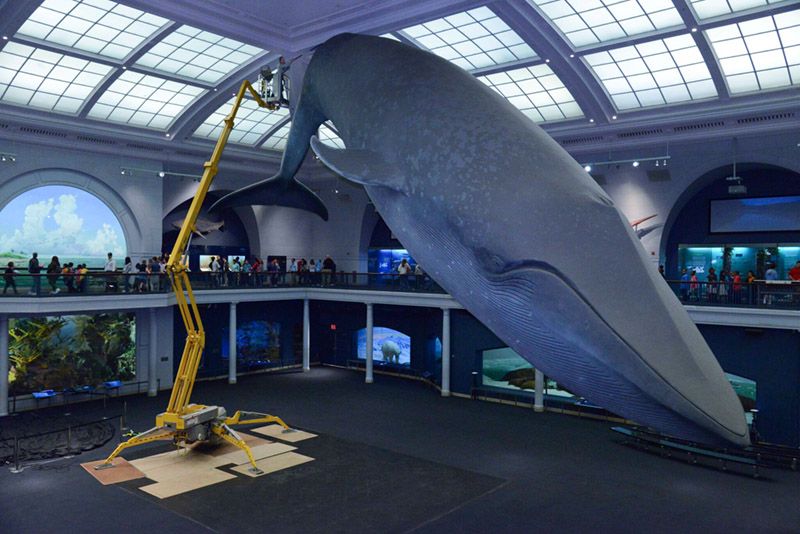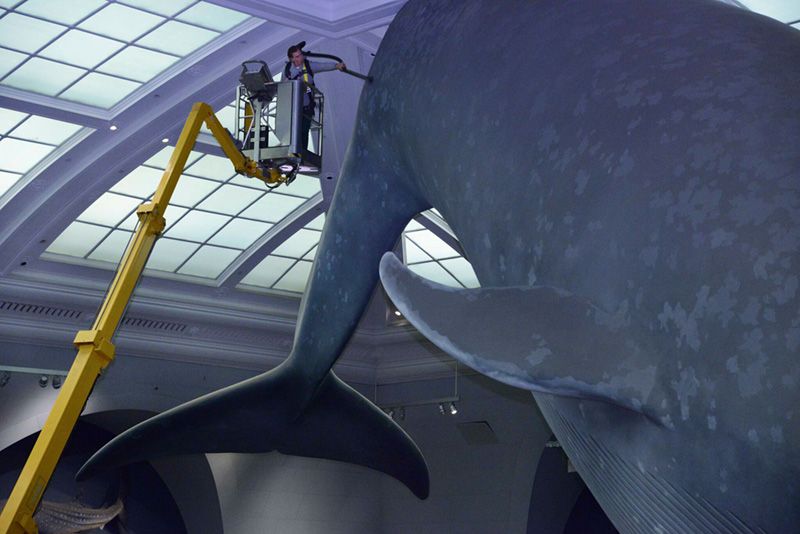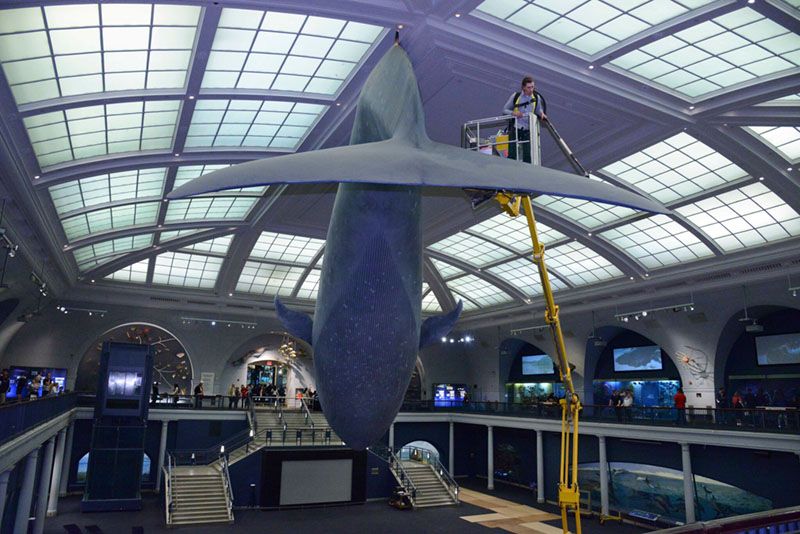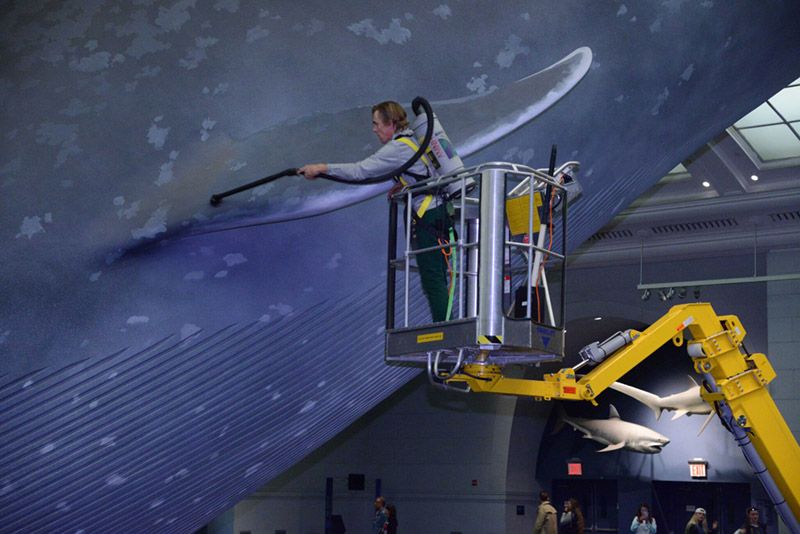The Berkshires Bowling Alley that Inspired "The Big Lebowski"
It’s been 36 years since the release of The Big Lebowski, the irreverent cult comedy by Joel and Ethan


It’s that time of year again: the enormous blue whale at the American Museum of Natural History is getting its annual wash down — and we were there to live-stream the event, which took place earlier today inside the Irma and Paul Milstein Family Hall of Ocean Life. Wielding long-handled brushes and vacuums, Exhibition Department staff meticulously cleared dust and dirt off the iconic life-sized model, which was constructed based off of photographs of a dead female blue whale that was found off the coast of South America’s most southern point in 1925.
Installed in 1969 and made of fiberglass and polyurethane, the 94-foot blue whale is considered to be one of the Museum’s “most beloved icons.” It’s currently the largest model of the largest creature that has ever lived on Earth, weighing in at a total of 21,000 pounds.
“It’s a fiberglass skin on a metal steel armature,” said Dean Markosian, director of project management Museum’s Department of Exhibition. “It’s all suspended from one point in the ceiling, so it has this quality of floating in space. It does collect dust over time, so we have to clean it about once a year.”

Photo courtesy of ©AMNH/C. Chesek

Photo courtesy of ©AMNH/C. Chesek

Photo courtesy of ©AMNH/C. Chesek

Photo courtesy of ©AMNH/C. Chesek
The entire cleaning process currently take about two to three days, but that wasn’t the case just a few years ago; Museum staff members now utilize a lift for the procedure, whereas scaffolding had to be erected around the whole model in a previous scrub-down process that generally took about a week.
In 2003, the Milstein Hall of Ocean Life was reopened following a $25 million renovation, which included a rehabilitation of the whale to make it “more anatomically accurate than before,” says the museum. In the last fifty years, many more resources have become available for the study of the blue whale. As a result, the blue whale model at the American Museum of Natural History had a bit of a makeover: the eyes were made less bulging, the blowholes more true to nature, and made the tail more tapered. It also got a new paint job – which required 25 gallons of paint.
Next, check out the Top 12 Secrets of the American Museum of Natural History, and see our previous coverage of AMNH’s whale scrub down.
Subscribe to our newsletter